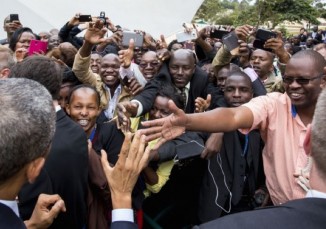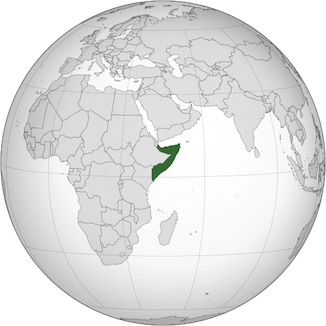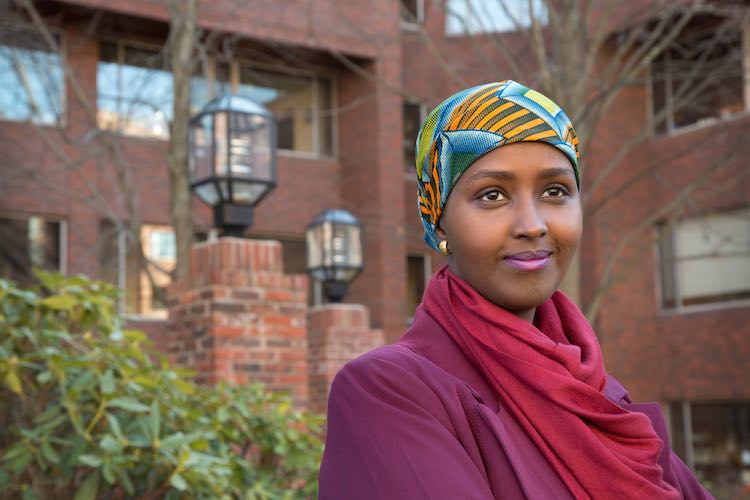After fleeing her homeland almost 25 years ago, Fadumo Dayib has decided she wants to be president of Somalia.
“I’m generally an optimist,” Ms. Dayib told Good News Network.
She certainly needs to be, since she’s the first female candidate in the nation and going up against some fiery opponents in a male-dominated country.
Her life story provides reason for optimism, too. She’s beaten enormous odds during her 42 years.
She learned to read at age 14, an impressive feat for any Somalian woman – and used that skill to earn a master’s degree in health care and public health, and a second one in public administration from Harvard’s Kennedy School of Government.
Dayib and her family left as refugees fleeing Somalia’s civil war when she was just a child, living briefly in Kenya before settling in Finland.
She returned to Somalia briefly as part of a U.N. mission to build clinics and provide health care in 2005, but left the country again when the U.N. deemed it was no longer safe to stay.
Amazing Towers In Ethiopia Harvest Clean Water From Thin Air
Always in the back of her mind, Dayib, now a mother of four, wanted to heal the wounds in her homeland and knew the changes would have to come from the top—which is why, having graduated from Harvard this spring, she is running next year to become the first woman president of her native country.
“Somalia needs a multidimensional approach to tackling issues,” Dayib told Good News Network. “But everything boils down to tackling poverty.”
Somalia is still recovering from more than 20 years of civil war and its aftermath, and the country lacks many basic services; but Dayib believes Somalia is poised for a brighter future.
 This summer, U.S. President Barack Obama visited neighboring Ethiopia, another African nation rebounding after decades of strife and famine—Dayib herself points to Liberia and Rwanda as examples of African nations that have rebuilt themselves after civil war.
This summer, U.S. President Barack Obama visited neighboring Ethiopia, another African nation rebounding after decades of strife and famine—Dayib herself points to Liberia and Rwanda as examples of African nations that have rebuilt themselves after civil war.
All three countries have been torn apart by factional infighting, but Liberiapo and Rwanda have been restoring civil order and a new government. She now sees Somalia following in their footsteps – establishing in 2012 its first parliament in two decades, and, next year, holding it’s first democratic presidential election since 1967.
She sees health care, sanitation, education and jobs as the building blocks to eliminating poverty and laying a new foundation for the nation. Though a 67% unemployment rate may be overwhelming, she believes Somalis could benefit greatly through access to micro-finance — small loans that help build simple farming, fishing or other businesses so people can lift themselves out of poverty.
 Dayib also wants to end terrorism by inviting militants to the peace table.
Dayib also wants to end terrorism by inviting militants to the peace table.
“We can’t get out of the hole we’re in until we admit to the role we’ve played in the state the country is in,” she said.
Digging Somalia out of poverty will indeed require Somalis, long divided by internal fighting, to lay down weapons and work together.
Dayib wants a truth commission, similar to South Africa’s Truth and Reconciliation Commission set up in 1996 following apartheid, which allowed victims of violence to tell their stories and the perpetrators who listened to be granted amnesty for their role. The Commission, led by Archbishop Desmond Tutu who was awarded the Nobel Peace Prize, healed many of the deep-seated wounds between whites and blacks in that country.
Boundlessly courageous, Ms. Dayib is unshaken by death threats from militants angry over the idea of a woman running for office. Despite the threats and painful memories of this place, Dayib believes she must return to heal the country’s pain while it still suffers.
“I’m a dreamer,” she said. “I dream of what Somalia could be like.”
A dreamer and optimist might be the last kind of person you’d expect to see running for president in the Horn of Africa, or it might be exactly what it takes to stay in the race.
(WATCH the video interview below and READ more at the Harvard Gazette) – Photo from Harvard.edu





















What a brave woman! I pray for her safety and success.
This is what I call mountain-moving faith, breaking boundaries and maximizing opportunities against. ALL the odds. I wish Fadumo Dayib and her family God’s speed, wisdom and protection. Yes, You Can!